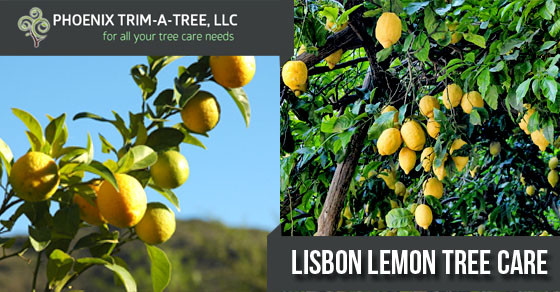Preparing Trees for Arizona Monsoons
GETTING YOUR TREES READY FOR THE HOT SUMMER IN PHOENIX, AZ 2022
GET A FREE ESTIMATE TODAY!
If you are searching for “How To Get Your Trees Ready For Summer In Phoenix, AZ 2021” this is the guide for you. Summer in Arizona is famous for sunny days and intense heat. While we spend the summer staying cool inside with our AC the plants and trees in our landscapes do not enjoy such luxuries. To keep them healthy, strong, and beautiful there are some things to keep in mind.
Preparing trees for Arizona monsoons is crucial to minimize damage and ensure the health and stability of your trees during the intense storms. Here are some steps and tips to help you get your trees ready:
1. Regular Pruning and Trimming
- Remove Deadwood: Eliminate dead, diseased, or damaged branches. Deadwood is more likely to break during a storm.
- Thin the Canopy: Reducing the density of the tree canopy allows wind to pass through more easily, decreasing the likelihood of branches breaking.
- Shape the Tree: Proper pruning to shape the tree can improve its structural integrity. Avoid topping trees, as this can create weak points.
2. Inspect for Structural Issues
- Look for Weak Branches: Identify and address weak or V-shaped branch unions which are prone to breaking.
- Check for Root Problems: Ensure the tree has a stable root system. Look for signs of root rot, upheaval, or other issues that could affect stability.
3. Cabling and Bracing
- Support Weak Limbs: Use cables and braces to support weak branches and limbs, providing extra stability during high winds.
4. Watering and Mulching
- Deep Watering: Ensure trees are well-hydrated, as drought-stressed trees are more susceptible to damage.
- Mulching: Apply mulch around the base of the tree to retain moisture and protect roots. Avoid piling mulch against the trunk, as this can lead to rot.
5. Soil Care
- Aerate Soil: Compacted soil can stress tree roots. Aerate the soil around trees to improve root growth and stability.
- Proper Fertilization: Provide necessary nutrients to maintain tree health, but avoid over-fertilizing which can lead to weak, rapid growth.
6. Remove Hazardous Trees
- Assess Tree Health: If a tree is in poor health or structurally unsound, consider removing it to prevent potential damage to property or other trees.
- Professional Assessment: Hire an arborist to evaluate questionable trees and recommend removal if necessary.
7. Wind Barriers and Protection
- Temporary Wind Barriers: Install temporary windbreaks or barriers around young or newly planted trees to shield them from intense winds.
- Staking Young Trees: Properly stake young trees to provide support, but ensure stakes are not left on too long as this can inhibit natural root and trunk development.
8. Clean-Up and Maintenance
- Debris Removal: Regularly remove fallen leaves, branches, and other debris around the base of trees to prevent disease and pest infestations.
- Inspect After Storms: After each monsoon, inspect your trees for damage and address issues promptly to prevent further harm.
Proper preparation and regular maintenance can significantly reduce the risk of tree damage during Arizona’s monsoon season. Regular pruning, structural assessments, proper watering, and timely interventions like cabling or staking are essential. Consulting with a professional arborist can provide additional insights and tailored recommendations to ensure your trees remain healthy and resilient during storm season.
Preparing your trees for the hot summer months in Phoenix is essential to ensure their health and longevity. Here are some tips to help your trees thrive in the extreme heat:
1. Watering
- Deep Watering: Water deeply and infrequently to encourage deep root growth. Water should penetrate the soil to a depth of at least 2-3 feet.
- Watering Schedule: Water mature trees every 10-14 days and younger trees more frequently. Adjust based on tree species and weather conditions.
- Early Morning or Late Evening: Water in the early morning or late evening to minimize evaporation.
2. Mulching
- Apply Mulch: Add a 2-4 inch layer of organic mulch around the base of the tree. Keep mulch a few inches away from the trunk to prevent rot.
- Benefits: Mulch helps retain soil moisture, regulate soil temperature, and reduce weed competition.
3. Pruning
- Timing: Prune trees in late winter or early spring before the onset of extreme heat.
- Remove Dead Wood: Remove dead, damaged, or diseased branches to improve tree health and reduce stress.
- Avoid Excessive Pruning: Do not over-prune as it can stress the tree and increase vulnerability to heat damage.
4. Fertilization
- Balanced Fertilizer: Apply a balanced, slow-release fertilizer to provide essential nutrients.
- Avoid Over-Fertilization: Over-fertilizing can cause excessive growth and stress the tree.
5. Shade and Protection
- Temporary Shade: Provide temporary shade for young or newly planted trees using shade cloth or other materials.
- Wind Protection: Protect trees from strong winds that can cause desiccation by using windbreaks or barriers.
6. Soil Health
- Soil Testing: Test soil to check for nutrient deficiencies and pH levels. Amend soil as needed based on test results.
- Organic Matter: Incorporate organic matter such as compost into the soil to improve soil structure and moisture retention.
7. Pest and Disease Management
- Regular Inspection: Regularly inspect trees for signs of pests and diseases. Early detection and treatment are crucial.
- Integrated Pest Management (IPM): Use IPM strategies to manage pests, which include cultural, biological, and chemical controls.
8. Choosing the Right Trees
- Drought-Tolerant Species: Plant drought-tolerant and heat-resistant tree species that are well-suited to the Phoenix climate.
- Native Species: Consider native trees that are adapted to local conditions and require less maintenance.
9. Tree Wrapping
- Trunk Wraps: Use light-colored trunk wraps to protect young trees from sunburn, which can cause bark damage.
- Removal: Remove wraps in the fall to prevent moisture buildup and potential rot.
10. Monitoring and Maintenance
- Regular Monitoring: Keep a close eye on tree health throughout the summer. Look for signs of stress such as wilting, leaf scorch, or yellowing leaves.
- Adjust Care as Needed: Be prepared to adjust your care routine based on weather conditions and tree health.
By following these tips, you can help your trees withstand the intense heat of a Phoenix summer and ensure they remain healthy and vigorous year-round.
WHICH TREES TO SELECT
The plant stock you choose should be of great quality and the type of trees you choose should be ones with lower growth amount along the main trunk. It’s very possible that if you choose the right type of trees for summer that you won’t even need guying or staking. When selecting trees at your local nursery it is important to choose drought resistant trees. These select species are better prepared to grow well in the heat of Phoenix. They are more forgiving for when people miss a watering and simply grow better because they are native either to Arizona or similar climates.
WHAT TREES TO AVOID PLANTING
Avoid trees with long trunks like the one you see ones you see in the picture, instead, try trees with shorter trunks or trees that are native to the desert climate of Phoenix. These desert type trees are able to withstand more wind damage and are adapted to the Phoenix soil, the nearby pests and other factors usual in the desert climate of Arizona. It is also good to avoid any trees which will need a lot of water. Forgetting to water these trees will have consequences and they simply do not weather as well as desert trees. Choose options like the Palo Verde Tree, Sissoo Tree, or Tipu Tree which are accustomed to the intense heat of Arizona.
WHERE & HOW TO PLANT TREES
Trees should be planted in groups to add extra protection to the surrounding trees and other plants. The location in your landscape you plant your trees should take into consideration how much sun each species needs. Some types of trees enjoy full sun all day long, others will benefit from having some afternoon shade. Ensure that trees are not planted too close to the house, power lines, or other structures. Try to plan ahead for the full mature size of the tree when choosing a spot so you don’t have to over trim or remove the tree later.
TREE PRUNING
Try not to prune too much after first planting the trees. They need all the energy they can get to ensure positive growth in the future. Do not remove the water sprouts. Look at the picture below. The water sprouts are the super small branches growing on the lower parts of the trunk and branches. These water sprouts are helpful to provide taper and additional strength to support the tree as it increases in weight over time. Water sprouts also help shade and prevent sun damage on the interior branches.
PROFESSION SUMMER TREE CARE
Phoenix Trim-A-Tree is your source for knowledgeable tree preparation for summer and general tree care. We can help take care of all the details to get your trees ready for summer. Our team is passionate about providing top notch tree trimming, tree care, and tree removal for trees which have died or have become unstable. If a tree falls in the woods, no one might hear it, but you will definitely hear it if one falls on your home or in your yard. Take the time to inspect your trees or have our team come and inspect them so you know what should be done to ensure the tree’s health and your safety. If you have questions about how to take care of your trees during the hot summer months or would like us to come take care of the job for you, give us a call!




